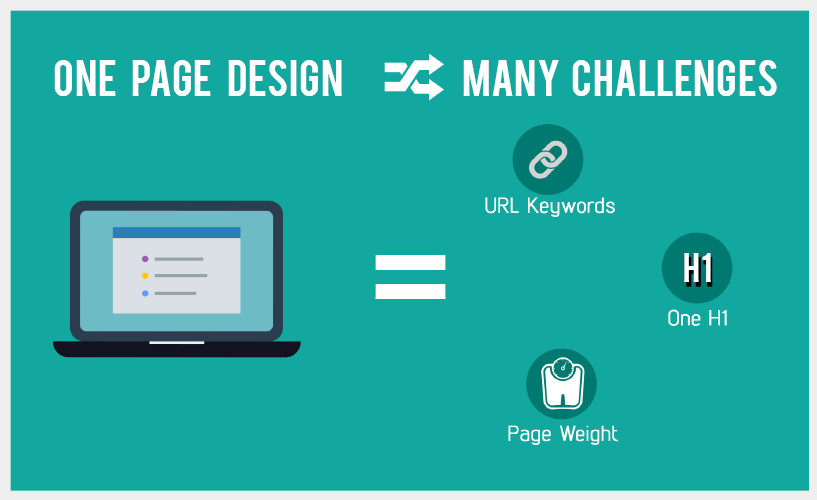PARALLAX SCROLLING WEBSITES AND SEO
Originally created for the gaming industry, parallax scrolling is basically a scrolling technique in computer graphics, where a background image moves in along with a foreground images, but at a slower rate. This kind of “special effects” technique creates an illusion of depth for a website.
Parallax scrolling is a pretty complicated design technique and you might want to keep the below mentioned points in mind.
- Start with creating an SEO architecture, eventually moving on to implementation of your design.
- Parallax Scrolling is really unsuitable for mobile websites or their mobile-friendly versions because it makes websites noticeably heavy. So, if your main site runs parallax scrolling, it is best to remove it from your mobile website since it will in invoke a tedious user-experience.
As a web developer, one should be aware that parallax scrolling can cause multiple SEO issues because it adds a lot of weight to a website, and no search engine wants to deal with a content heavy website, including Google. Again, it is recommended that one ascertain as to whether they really want or need parallax scrolling effects on their website.
This is because people are averse to change, and if you have a website that has been running for a long time and has high-traffic inflow, it’s best to keep track on how the users or visitors are reacting to the changes on the website.
Does Parallax Really Affect SEO?
To put all your doubts to rest, yes. If not implemented properly, parallax scrolling can seriously affect your SEO rankings. It is common knowledge that search engines search for and identify websites that are rich in content and functionality.
Coincidentally, search engines also loathe heavy website, putting web developers in a really tight spot. It is, however, useful to note that a parallax-enabled website is typically just a single or one-page website. You also know that you aren’t allowed to have multiple H1 headers or meta-descriptions for a website that has all of its content crammed into a single page, no matter how convenient it is for you.
Challenges of Parallax Scrolling:
So, let’s see what parallax scrolling actually does for your SEO intentions.

1). Loading Time
Parallax-enabled websites have much longer load times than standard websites. And nothing is more annoying than a website that takes forever to load. In fact, statistics have revealed that users will switch websites if the load time exceeds 5 seconds, five seconds! Which means you only have 5 seconds to retain the interest of a potential customer.
2). Measuring User Engagement
For a website that employs parallax scrolling, it is very difficult and in some cases, virtually impossible, to measure the level of user engagement using Google Analytics. This is because Google Analytics employs a JavaScript tracking code, which it uses to obtain user engagement calculations. Plus, it is impossible to figure out where most of the user traffic is headed, on a site that hosts just a single page.
3. Not Always Browser-Friendly
It might be possible that a parallax page does not work properly across all Web browsers. A page can run properly in Firefox but fail to do so in Google Chrome. The same can happen in the case of Internet Explorer and Safari. It might require extensive testing to make sure that everything works accurately across all web browsers.
4. Not Mobile or SEO-Friendly
The biggest risk of running a parallax site may be its inability to run properly on mobile web devices. And with the ever-increasing popularity of mobile smartphones and tablets, non-mobile user friendly websites will definitely be a burden on their business. Another peculiar issue with enabling parallax scrolling is the difficulty for developers to optimize the site for specific keywords. This is because it is difficult to optimize for multiple keywords on a single page of web content, compared to that of a multiple-page website.
5. How to handle Parallax Scrolling and SEO?
Irrespective of how complicated a technique parallax scrolling may be, if you really want the parallax effect on your site, there are a few structural ideas that you can use to run your website with parallax scrolling while also keeping it search engine optimized.
A solid start would be to assign all internal links to different sections of the parallax website, which would really help the search engines index page content.
Another point you should consider is that these navigation functions can also be used for internal linking at the same time. This ensures seamless accessibility to the webpage, allows you to use the parallax effect, and use multiple pages simultaneously. By doing this, you will effectively have multiple URLs while also performing keyword-
specific optimization on them. It’s recommended that you use tools like Ajax and the navigation functions to change the URL. This will improve the user experience since they will be automatically redirected down to the webpage to the relevant post with a special URL.
Finally, try starting your own blog and keep updating it frequently. This will not only impress your guests by keeping the parallax effect running smooth on your site, but the blog you just created will also increase the flow of traffic to your site.

